Construction Begins on Longest Undersea Road Tunnel
- Youtube Views 67,458 VIDEO VIEWS
NORWAY'S west coast is world-famous for its deep fjords and rugged natural landscape.
Romantic though this may be, it also means that the 1,100-km long coastal road, the E39, includes seven ferry crossings and has a total travel time of 21 hours.
In order to improve the region's connectivity and further economic development, the Norwegian government has approved a significant upgrade of the E39 in its National Transport Plan 2018-2029.
The total cost of this infrastructure project - the largest in Norway’s history and one of the largest in the world - is an estimated USD $43.8BN.
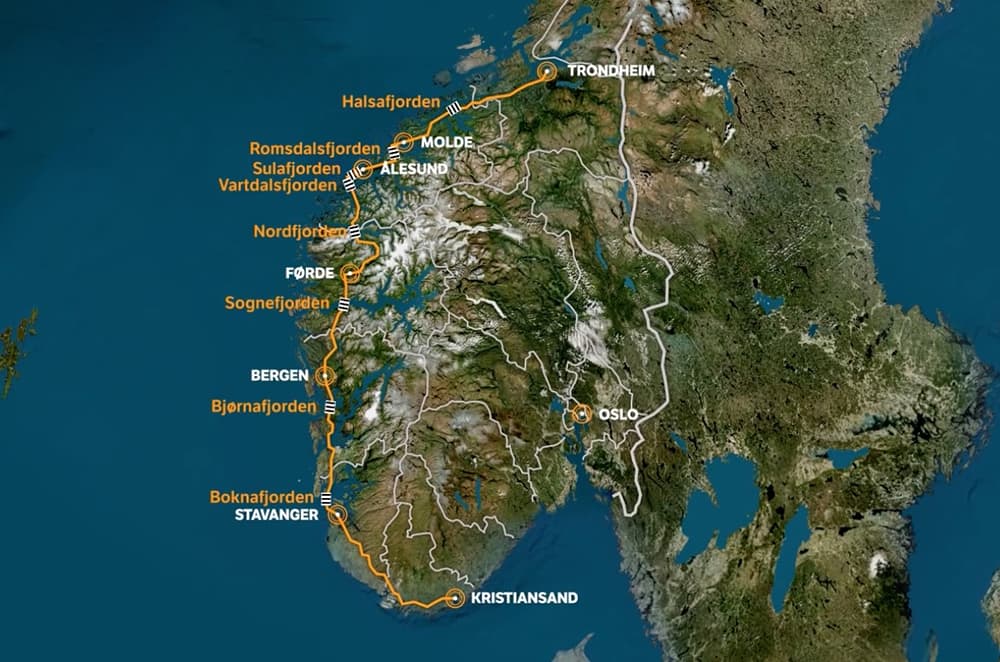
Above: Norway's coastal road, the E39, contains seven ferry crossings. Below: Some of the ferry replacement links could be constructed as submerged floating tunnels (images courtesy of Statens vegvesen).
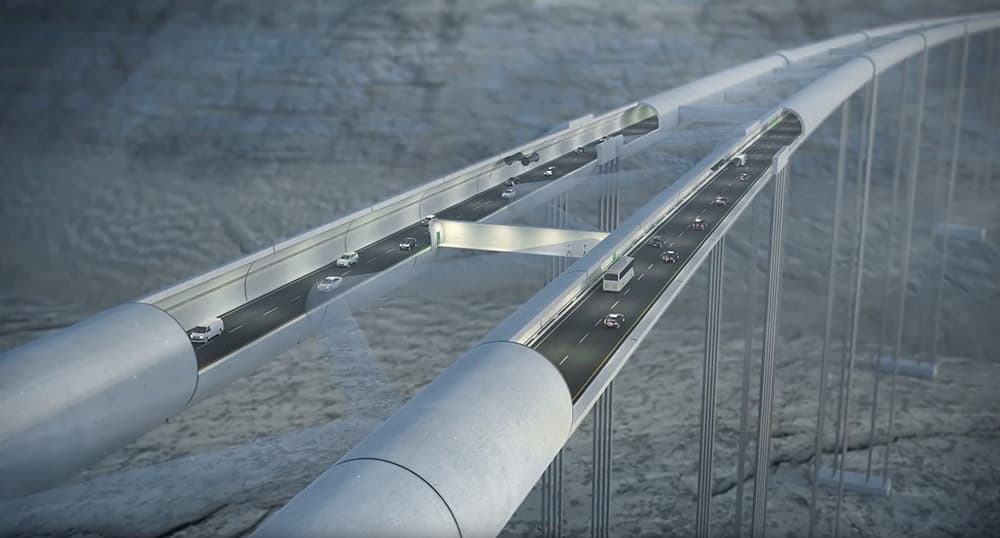
A number of feasibility studies are being carried out to determine the most effective ferry replacements at each phase of the project. Possible solutions
range from pontoon and suspension bridges to undersea-bed and submerged "floating" tunnels.
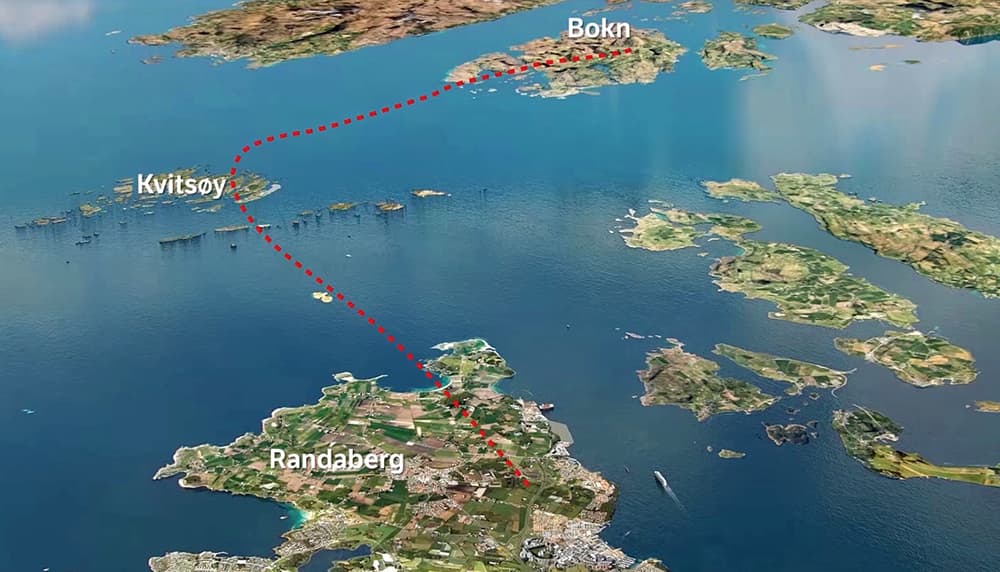
Above: The route of the Rogfast tunnel (image courtesy of Statens vegvesen).
The first phase of this large-scale overhaul will be the Rogfast sub-sea road tunnel underneath Boknafjorden; replacing one of two ferry crossings on the route from Stavanger to Bergen.
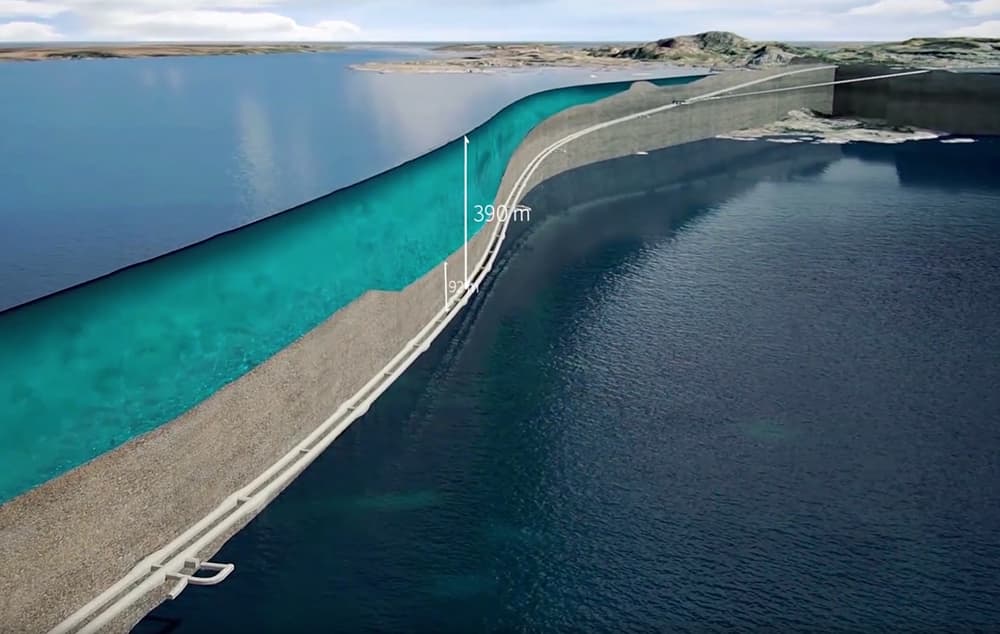
Above: A cross section of the tunnel showing its maximum depth (image courtesy of Statens vegvesen).
With a length of 26.7km and a maximum depth of 392 metres below the sea level, the Rogfast road tunnel will be the longest, and deepest, undersea road tunnel in the world.
The two tunnel tubes will have a 10.5 metre diameter, each carry two lanes of traffic and feature a spiral loop to the island of Kvitsøy.
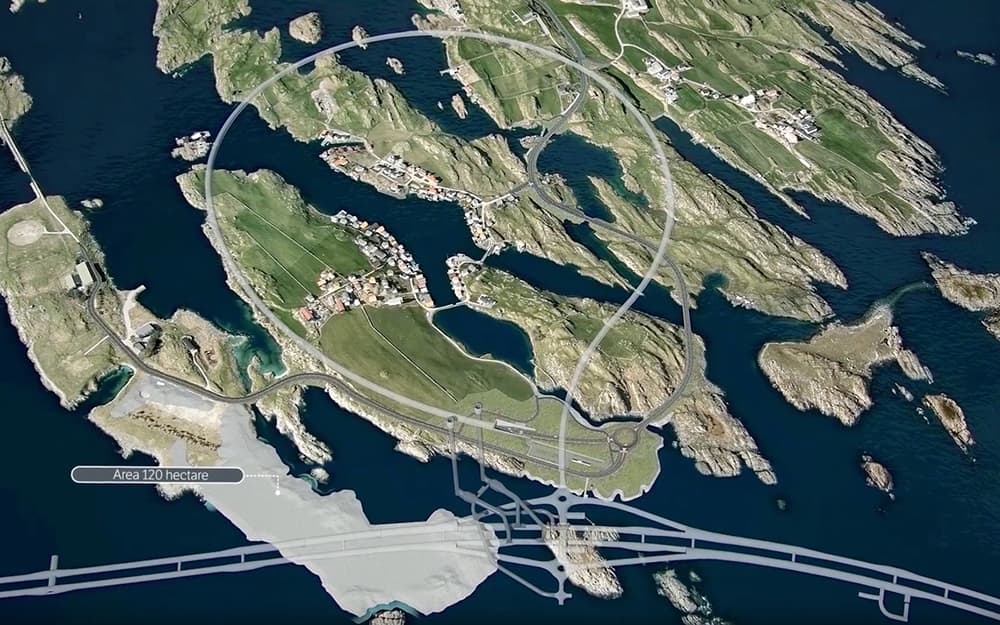
Above: A computer generated image showing a connecting spiral loop to the island of Kvitsøy (image courtesy of Statens vegvesen).
In order to ensure the safety of the motorists, the tunnel will feature an emergency lay-by every 500 metres and an emergency exit every 250 metres connecting the two tunnels.
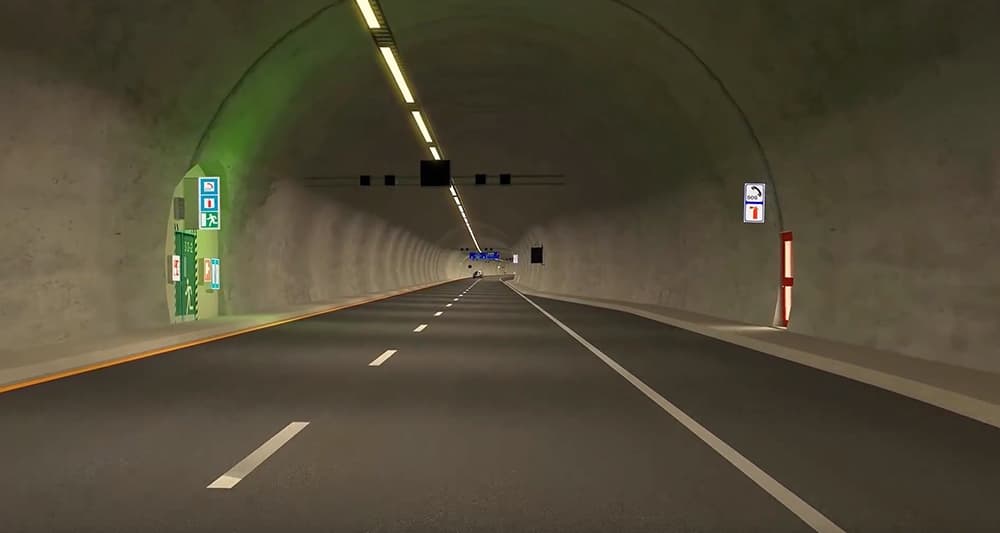
Above: A computer generated image showing an emergency lay-by and an emergency exit, which connects to the tunnel's second tube ( image courtesy of Statens vegvesen).
Work on the USD $2.2BN tunnels began earlier this year. Once completed in 2025-2026, the tunnel will cut the travel time between Stavanger and Bergen by 40 minutes.
For a complete overview of the E39 project, you can watch the video, from Norway's road authority Statens vegvesen, here:





